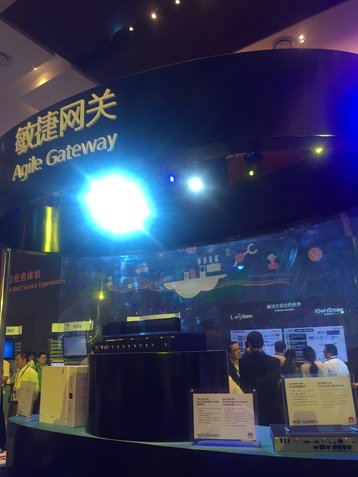Chinese networking giant Huawei has launched LiteOS – a lightweight open source operating system for the Internet of Things (IoT), with a kernel that weighs in at just 10KB.
LiteOS was designed to be energy efficient – the company claims that it can collect and send data for up to 10 years powered by nothing but a pair of AA batteries.
The new OS is an integral part of the Agile Network 3.0 architecture, which was unveiled at the Huawei Networking Congress (HNC) in Beijing on Wednesday. The company has also announced Agile IoT gateways and an Agile Controller, designed to transport information obtained from various sensors to the data center.
Zero calories
Huawei expects the world to produce 100 billion connected devices by 2025 - when two million new sensors will be deployed every hour, and 50 percent of all network bandwidth will be dedicated to IoT.
As the world’s largest vendor of networking equipment – well ahead of Cisco and Ericsson, according to a recent report from IHS - the company is seriously concerned that the current Internet model will not be able to support such rapid growth.
“We need breakthrough technologies,” said William Xu, chief strategy and marketing officer at Huawei, during the opening keynote of HNC.
LiteOS is the world’s smallest actively developed OS – the kernel of its closest competitor KolibriOS requires a ‘massive’ 100KB - but it manages to squeeze all of the code necessary to control ‘things’ into just 10KB – excluding middleware components and APIs.
The operating system can run on PC, mobile and IoT hardware. It requires zero configuration and automatically establishes a mesh network with nearby LiteOS devices.
To link the sensors running LiteOS to the servers, Huawei has launched the AR series of IoT gateways that feature Ethernet, Wi-Fi, 3G, 4G LTE, Bluetooth, ZigBee and even Power Line Communication (PLC) connectivity. These hardware platforms can be based on either x86 or ARM system architecture.
And to organize and manage the resulting data, Huawei has created the Agile Controller – an IoT-oriented service management platform based on OpenDaylight SDN architecture.
The LiteOS project also provides chipsets, modules and open source hardware boards for prototyping, although it should be noted that detailed technical information is currently only available in Chinese.
Huawei hopes its miniature OS will be applied to smart homes, wearables, connected vehicles, smart meters and industrial networks.
“We believe that the maturity of the IoT can be advanced by this operating system, and that can also facilitate development of the whole ecosystem. After that, we believe, it can drive the network equipment sales of Huawei, but we do not try to make big money from LiteOS,” said Liu Shaowei, president of switch and enterprise communications product line, during a press conference that followed the keynote.

